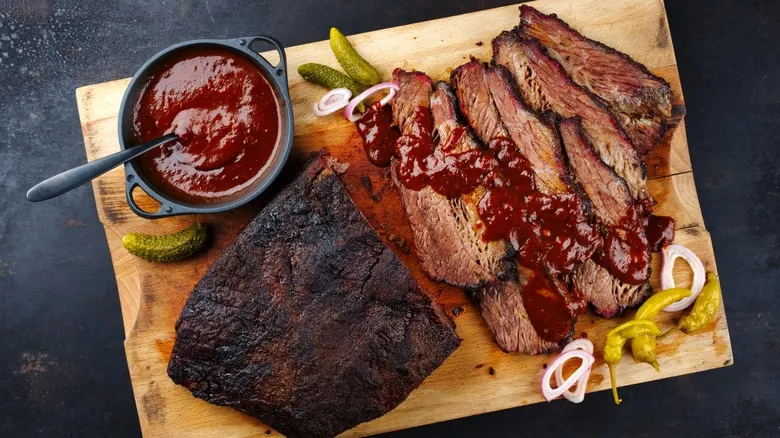Kansas City barbecue sauce
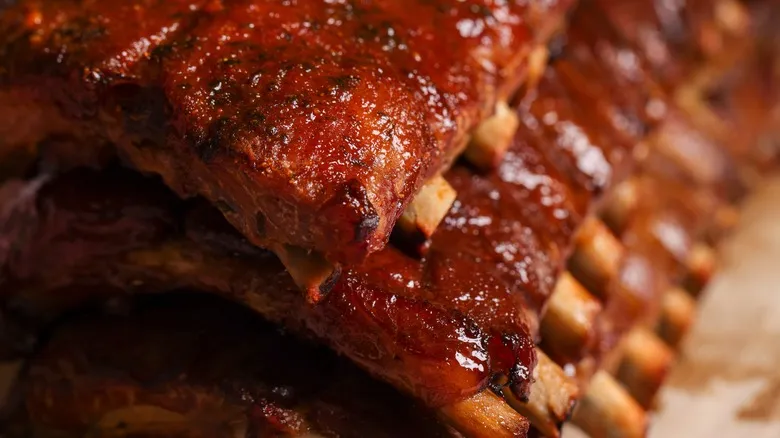
When most people envision barbecue, they often think of the thick, sweet sauce characteristic of Kansas City style, which has just the right amount of spice to tantalize your taste buds. This sauce is primarily tomato-based, featuring ketchup and tomato paste or sauce as key ingredients. However, authentic Kansas City barbecue boasts a distinctively sweet sauce that enhances its flavor and clings to both your dishes and your palate. Known for being the richest and thickest of barbecue sauces, it derives its syrupy consistency from its base. While vinegar adds a touch of tangy acidity, it's worth noting that KC barbecue is not primarily vinegar-based; rather, the vinegar serves as a subtle enhancement to the overall flavor profile. The specific blend of seasonings can differ, but it generally includes garlic powder, onion powder, paprika, and a hint of chili powder. The most crucial components, however, are brown sugar and molasses, with the spices designed to complement these sweet elements.
Kansas City barbecue is celebrated for its hearty nature, making it an excellent pairing with burnt ends, a local specialty. It also pairs wonderfully with brisket, ribs, or virtually any type of barbecued meat. In addition to the rich, sweet sauce, KC barbecue often incorporates a dry rub, resulting in meat that is both flavorful and exceptionally moist.
Carolina vinegar barbecue sauce
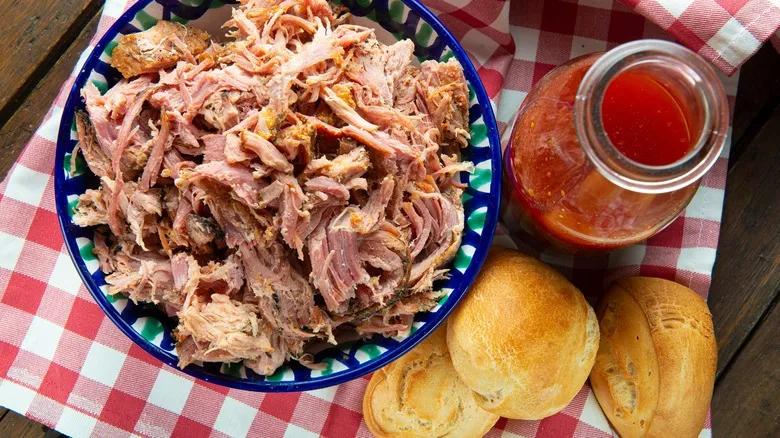
North Carolina barbecue sauce is renowned for its vinegar-based recipe, which can have a bit of heat depending on the spices used. This sauce is especially popular in Eastern North Carolina, where it complements a variety of dishes, from pulled pork to brisket. The addition of apple cider vinegar provides a tangy yet sweet flavor that pairs perfectly with pulled pork. You can find pulled pork at roadside barbecue joints, where it has been slow-smoked for hours and generously coated in the vinegary sauce. Many restaurants offer extra sauce on the side, allowing you to add more to your sandwich or even use it as a dip for fries for an extra zesty kick.
A basic recipe typically includes cayenne pepper and hot sauce, but there are numerous small-batch variations that each have their unique blend of spices. The one common element among them is the essential ingredient: vinegar. Compared to the thicker Kansas City barbecue sauce, which is its main competitor, Carolina sauce is generally thinner.
Carolina gold sauce
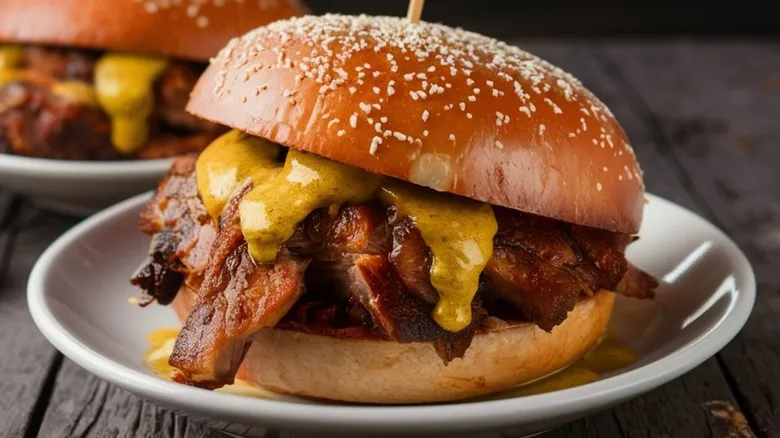
The golden hue of Carolina gold sauce comes from its primary ingredient: yellow mustard. This sauce originated in South Carolina, brought by German immigrants who had a passion for mustard. It boasts a tangy flavor profile, similar to Eastern North Carolina sauce, due to the vinegar mixed with the mustard base, while also incorporating a hint of sweetness from sugar or honey. The use of yellow mustard is essential for achieving the sauce's unique color, leading most to prefer this straightforward condiment over alternatives like dijon or grainy mustard.
Carolina gold complements pork and chicken beautifully, but it truly shines when paired with sausages, another culinary legacy from the German immigrants who introduced their mustard sauce. The consistency of the sauce can vary from thick to thin, depending on the ratio of mustard to vinegar. While spices such as onion powder and garlic powder are often included, the predominant flavor typically comes from the mustard itself rather than a complex spice mix.
Texas barbecue sauce

Everything is larger in Texas, so it’s no surprise that the Lone Star State boasts a variety of barbecue sauce styles. East Texas sauce closely resembles other regional sauces due to its closeness to the vinegary flavors of the South. It features a vinegar base combined with cumin and chili powder, and occasionally incorporates tomato paste and Cajun spices. Barbecue in East Texas is particularly smoky and rich, thanks to its marinades and spice blends, making it the sauciest barbecue style in the state.
In Central Texas, the emphasis is on dry rubs and smoking meats over specific types of wood to enhance their natural flavors. Beef, especially brisket, reigns supreme here and significantly influences barbecue practices across the state. West Texas also utilizes wood but prefers open flame grilling and pit barbecue as its culinary hallmark. Meanwhile, Southern Texas infuses Mexican flavors into its barbecue, with slow-cooked brisket and barbacoa being two beloved dishes.
Virginia barbecue sauce
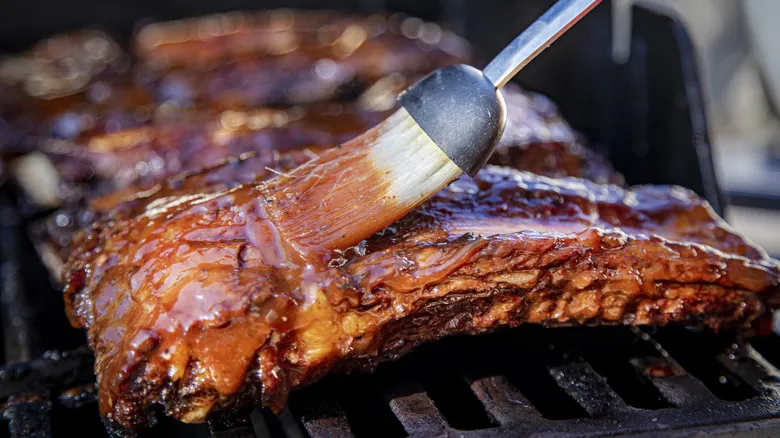
Similar to Texas, barbecue sauce in Virginia varies depending on the region within the state. Generally, Virginia's barbecue sauce is vinegar-based, akin to the sauces found in neighboring North Carolina and South Carolina's Carolina gold. The barbecue offered in the mountainous western areas of Virginia can differ significantly from that in the eastern coastal regions, with many popular restaurants featuring their own family secret recipes. Apple cider vinegar is a common ingredient in most variations, resulting in a thinner consistency compared to other regional sauces, such as the thick Kansas City style.
Virginia's barbecue sauce is rich in herbs and spices, contributing to its robust flavor. However, the specific blend can differ not only by region but also by individual chefs. Many restaurants proudly uphold recipes that have been handed down through generations, and patrons often have their personal favorites. While tomato paste or tomato sauce is typically a key ingredient in many Virginian sauces, making them a bit more substantial than pure vinegar sauces, they remain lighter and less syrupy since they lack molasses. Some variations even incorporate mustard for a unique brown hue and tangy taste, while others may include apple butter, fruit, or peanut butter for a truly distinctive flavor profile.
Korean barbecue sauce

Korean barbecue sauce derives its unique flavor from ingredients like soy sauce and ginger, among others. It enjoys particular popularity in Hawaii, largely due to the significant influence of Asian cuisine in the region. Soy sauce acts as the primary base for the sauce, while rice wine vinegar and sesame oil contribute additional depth of flavor. Fresh garlic and ginger are key components, though powdered alternatives can be used for a comparable taste. Some variations incorporate brown sugar for a touch of sweetness. This sauce can function as both a marinade and a dipping sauce, but it's important to avoid using the same batch for marinating raw meat and for dipping cooked meat.
Korean barbecue restaurants are prevalent across the United States, and a major aspect of the experience is the communal dining it encourages. As a result, many establishments do not serve individual customers. Traditional Korean barbecue allows diners to grill their own meats and vegetables at the table using a specialized stove, with a variety of marinades and sauces available to enhance different cuts of meat. In restaurants, the stoves may be electric, gas, or wood-burning, often equipped with built-in ventilation above the table. At home, a small tabletop grill can be used, but it's advisable to do this outdoors or ensure proper ventilation by opening windows. This fresh-off-the-grill element is crucial not only for personalizing your meal but also for enriching the overall dining experience.
Memphis barbecue sauce
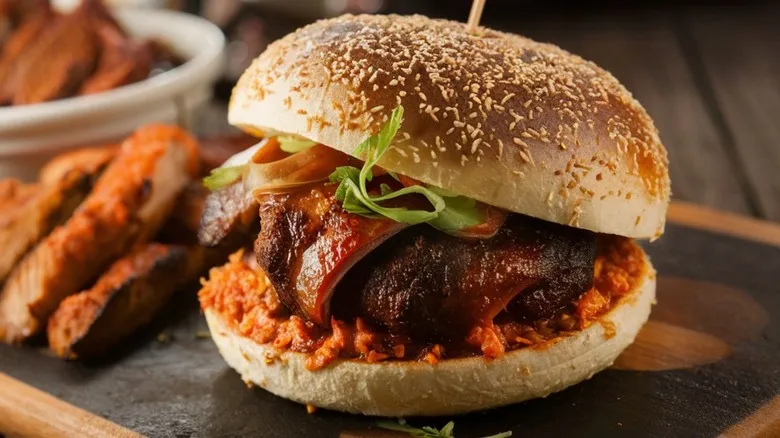
Memphis barbecue sauces incorporate vinegar and mustard into a tomato-based foundation. Most recipes begin with ketchup, which provides a similar acidity to Kansas City-style sauces. However, the addition of yellow mustard and apple cider vinegar imparts a distinctive tang and enhanced flavor, reflecting the region's preference for pork. While it can also accompany beef or chicken, pork remains the favored meat for Tennessee barbecue. Traditional Memphis-style barbecue is characterized by pit cooking, which involves slow preparation over low heat.
Key ingredients in this sauce include onion powder and garlic powder, with a bit of heat from cayenne pepper and chili powder. Some variations may be spicier than others, but generally, Memphis-style barbecue sauce is recognized for its tanginess rather than heat. It often contains brown sugar for a hint of sweetness, though it is less sweet and syrupy than Kansas City barbecue due to the absence of rich molasses. You can enjoy Memphis barbecue sauce on sandwiches featuring pork, beef, or chicken, as well as in barbecue spaghetti, a local specialty.
St. Louis barbecue sauce
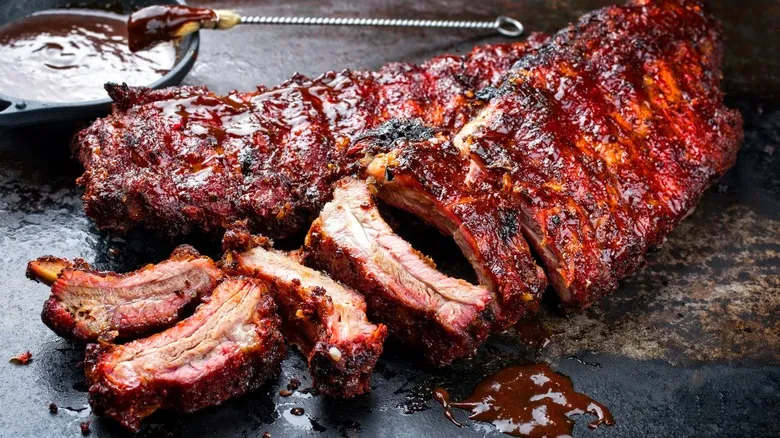
St. Louis barbecue may not be as renowned as its Kansas City counterpart, but it shares many of the same foundational ingredients, starting with tomato paste, tomato sauce, and ketchup. Like the tomato-based sauce from Kansas City, St. Louis barbecue incorporates additional vinegar along with a similar blend of spices, including onion powder, garlic powder, and cayenne. However, it lacks the thick molasses that is characteristic of Kansas City sauces, resulting in a thinner and less sweet flavor profile. Still, brown sugar adds a nice balance of acidity and sweetness to the mix, and yellow mustard is often included in small amounts.
This sauce is ideal for generously coating St. Louis-style ribs and pork steaks. Pork steaks, a local specialty, are widely enjoyed in the city, from barbecue joints to backyard gatherings. They are made from thin cuts of pork shoulder or butt, which are grilled and slow-cooked in St. Louis-style barbecue sauce. While you can find them specially cut at butcher shops across the country, they are readily available in most butcher cases in St. Louis, ready for your next cookout.
Lexington dip sauce
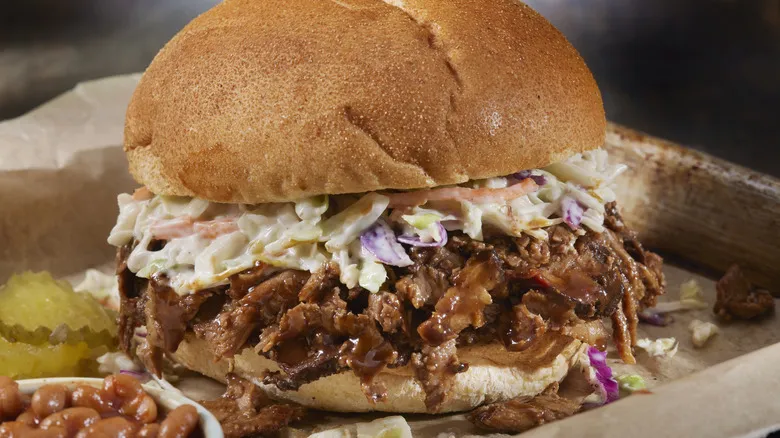
This sauce is unique to Western North Carolina, where it is referred to as "dip." It has a vinegar base but also incorporates ketchup and brown sugar. Lexington dip begins with the thin vinegar and pepper sauce that is favored in Eastern North Carolina, but it adds ketchup for a tangy kick and sugar for sweetness, along with additional seasonings and spices. While it contains cayenne pepper and red pepper flakes, it is milder than the sauce from Eastern North Carolina. Thanks to its strong vinegar foundation, it remains thinner than other tomato-based sauces, such as those from Kansas City, establishing its own distinct identity.
Lexington dip sauce is commonly enjoyed with pork, similar to many other barbecue styles in Carolina, particularly with pork shoulder. However, in Carolina, the pork shoulder is slow-roasted over low heat and then chopped instead of being pulled apart. This dip also complements chopped beef nicely. In the Lexington region, it is often served on sandwiches topped with coleslaw, which can be served on the side or heaped on top of the meat within the sandwich.
Alabama white sauce

Mayo-based barbecue sauces are relatively rare, but Alabama white sauce is a notable exception. This unique white barbecue sauce features mayonnaise as its primary ingredient, with vinegar contributing a distinctive tang to the creamy texture. Additional flavors come from brown sugar, lemon juice, horseradish, and a touch of cayenne pepper. While the original recipe was quite straightforward, it has evolved over the years to be suitable for bottling and is still served at the restaurant where it originated.
Alabama white sauce traces its roots back to the 1920s when "Big Bob" Gibson first prepared it for family and friends during backyard cookouts at his home. He mixed mayonnaise with vinegar to create the sauce, which he paired with chicken and pork that he slow-roasted in hand-dug pits. Local lore suggests that he developed the sauce to keep the roasted meat moist before serving, and the mayo-vinegar blend proved to be the ideal solution while also enhancing the dish's flavor. Gibson eventually opened a restaurant that remains family-owned and continues to serve the original white sauce he created.
Santa Maria barbecue sauce
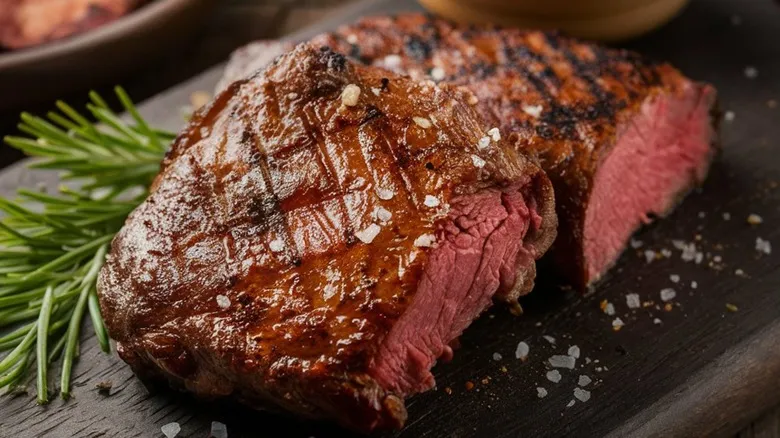
This barbecue style originated in the Santa Maria Valley of Central California and remains a lesser-known gem of the area. Although it may not enjoy the same level of national fame as other barbecue traditions, it boasts a loyal local fanbase and is renowned for its distinctive fusion of culinary influences shaped by the region's history. Santa Maria-style barbecue emphasizes both the cooking technique and the ingredients, featuring beef tri-tip or sirloin cooked over red oak, which imparts a unique smoky flavor.
Traditionally, pinquito beans accompany the meat, serving a role similar to that of a sauce. These beans are simmered in a mixture of tomato puree, mustard powder, brown sugar, Worcestershire sauce, ham, bacon, and spices. Native to California, pinquito beans are typically served alongside barbecued meat on a platter. If pinquito beans are unavailable, Navy beans can be used as an alternative. Additionally, Santa Maria barbecue is often complemented by salsa, which adds a burst of flavor and spice when generously applied on top.
Florida barbecue sauce

Florida-style barbecue sauce is characterized by its vibrant citrus notes and a hint of spiciness influenced by Cuban cuisine, particularly in the southern regions of the state. With abundant access to fresh citrus fruits and berries, many small-batch barbecue sauces incorporate local ingredients such as oranges, berries, and hot peppers. A common element in these recipes is orange juice, which provides a zesty acidity akin to the role tomatoes play in other barbecue sauce varieties.
Typically, the base includes vinegar along with tomato paste or sauce, similar to other tomato-based barbecue sauces. To enhance the flavor, brown sugar and honey are added for sweetness, while liquid smoke and Worcestershire sauce contribute complexity. The inclusion of fruit, especially citrus, imparts a unique Florida flavor, resulting in a sauce that feels brighter overall. For those who enjoy a kick, hot sauce or cayenne pepper can be included, with options available to match varying spice preferences. Florida barbecue sauce is frequently enjoyed with smoked fish, a fitting choice given the state's extensive coastline.
Nashville barbecue sauce
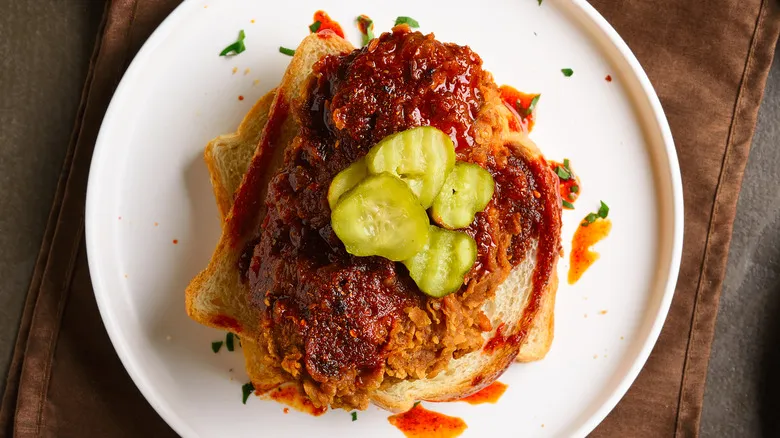
This sauce merges the vinegar foundation of the nearby Carolina-style sauce with sweet undertones reminiscent of Kansas City or St. Louis. While it shares similarities with other Tennessee barbecue styles, especially those from Memphis, Nashville barbecue sauce typically features brown sugar, a hint of molasses, and liquid smoke in most recipes, setting it apart from the ingredients found in Memphis-style sauce or Carolina vinegar barbecue. The addition of liquid smoke imparts a rich smokiness that is distinctly Nashville.
Like other barbecue joints in Tennessee, Nashville eateries primarily use this sauce on pork, though it also pairs well with beef and chicken. It is commonly served with pulled meat on a sandwich topped with zesty slaw and pickles. When visiting Nashville, you'll find Nashville-style barbecue at many of the top barbecue restaurants, where it is usually offered for lunch as a sandwich or as part of a dinner platter.
Recommended

Everything You Need To Know About Blooming Coffee

Can You Bloom Instant Coffee?

Why You Should Never, Ever Stir Turkish Coffee

How To Make Perfect Lattes At Home Without A Fancy Machine
Next up

